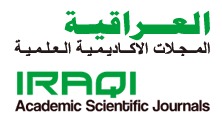The effect of the design thinking strategy to the performance of some group quick attack formations by increasing the number of students of handball
DOI:
https://doi.org/10.33170/jocope.v17i2.926-942Keywords:
Design Thinking Strategy, Team Fast Attack Formations, HandballAbstract
Motor learning is one of the important and distinctive sciences and the basis on which the educational process in the field of physical education and sports is based, due to its importance in the learner acquiring everything related to the game of handball and developing and mastering it well. Learning to perform some group fast attack formations with increased numbers gives a great opportunity. The attacking team can score the goal as quickly and with the least effort. The problem of the research is evident in the presence of a weakness in the performance of some collective rapid attack formations by the students, as well as difficulty in learning them. Therefore, the researchers decided to delve into this problem by using the design thinking strategy and its impact on learning the performance of the collective rapid attack formations for the students as a modest attempt to solve this problem. The study aimed to achieve a set of objectives, the most important of which were the following: preparing educational units using the design thinking strategy, and knowing the effect of the design thinking strategy in learning some group fast attack formations with increased numbers of handball among students. A set of hypotheses were imposed, the most important of which were the following: The design thinking strategy has a positive impact on developing the performance of students’ collective fast attack formations in handball. The experimental approach was used by designing two equal groups (experimental and control) with a pre- and post-test on a sample of third-year students at the College of Physical Education and Sports Sciences / University of Babylon for the academic year 2022-2023, who numbered (24 students) divided equally into two groups. The pre-measurement and the main experiment were conducted, followed by the post-measurement, and the data was collected and analyzed using a set of statistical methods, the most important of which were: (arithmetic mean, standard deviation, and t-test).









